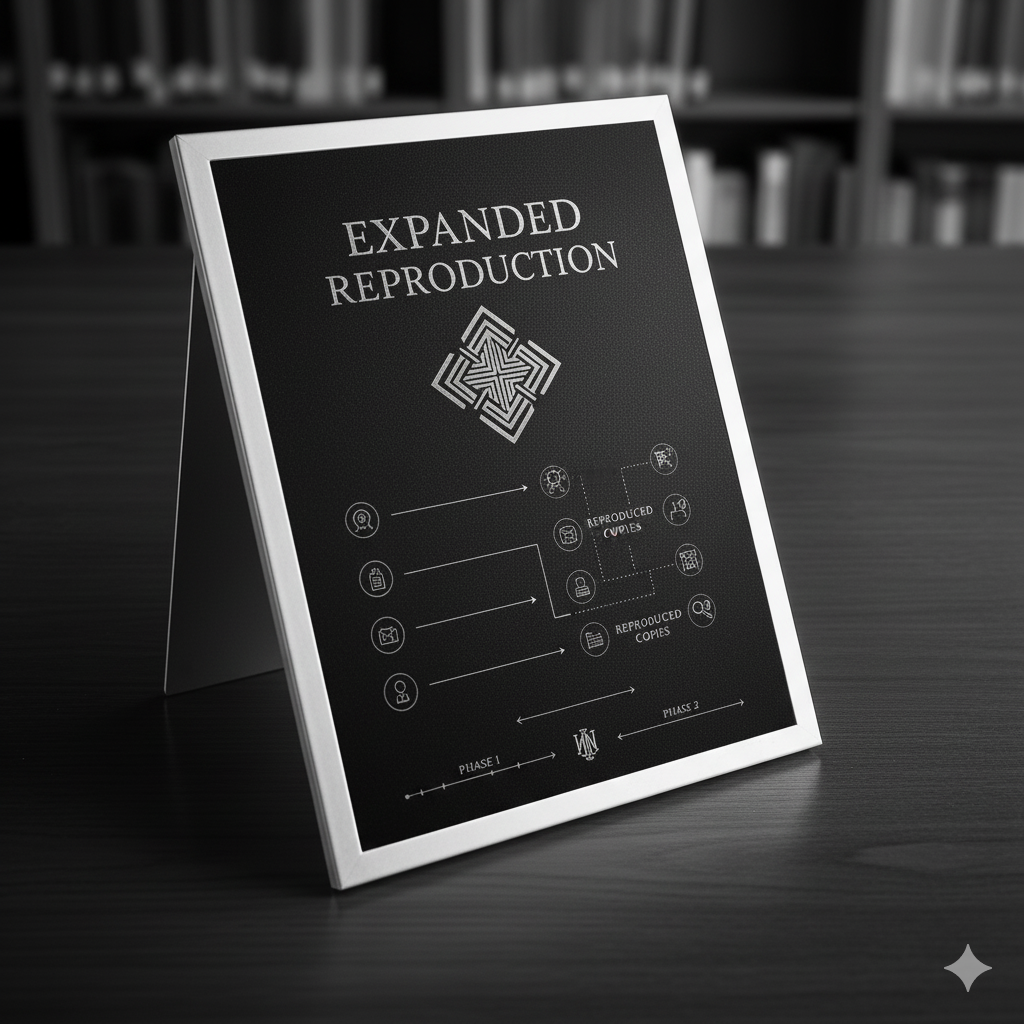
In the pursuit of profit, many companies eventually find themselves disconnected from their customers, their growth stalling. This often happens because they are chasing the “quantity” of profit while losing sight of its “quality” and “purpose.”
To achieve sustainable and sound business growth, it’s not enough to simply generate profits. A consistent philosophy is needed to transform those profits into “vitality for the future.”
This article proposes a new compass for management, one that connects the fundamental capitalist principle of “Expanded Reproduction” with the concept of “Elective Affinity,” a powerful force that creates a magnetic pull with customers.
First, let’s establish the foundational concept.
“Expanded Reproduction” means not merely consuming or retaining the profits earned from business activities, but reinvesting them to grow the business even further.
Like a farmer who plants a portion of their harvest in a wider field for the following year, this is the idea of using profits to strengthen the “means of production” (e.g., equipment, technology, talent) to create even greater value.
However, this raises the most critical question of all: “What, exactly, should we reinvest those profits in?” The compass that answers this question is “Elective Affinity.”
“Elective Affinity” (from the German Wahlverwandtschaft) is a concept describing a relationship where different elements are drawn together by an internal commonality, like magnets.


In a business context, we can define this as the point where your company’s philosophy, ideology, and strengths deeply resonate with the values, aesthetics, and desires of a specific customer group.
For example:
- An outdoor brand has a elective affinity with “adventurers who see environmental protection as part of their lifestyle.” That’s why they reinvest profits into product durability, repairability, and reducing their environmental impact.
- A stationery company has a elective affinity with “people who feel joy in the act of writing itself.” That’s why they reinvest profits into R&D to pursue the perfect writing feel, down to the last 0.1 millimeter.
The answer to the question, “Whose soul resonates with our soul?” is the unique “elective affinity” your business should possess.
Path 1: Deepening the Existing Affinity
This path involves reinvesting to make the affinity you’ve already found stronger and purer. You further polish the very value that makes customers feel, “This is exactly what I was looking for!”
- Objective: Increase customer loyalty, strengthen brand value, improve efficiency.
- Investment Examples:
- Quality Improvement: R&D investment in your product’s core technology.
- Experience Enhancement: Strengthening customer support systems or improving the ambiance of your stores.
- Process Optimization: Capital investment to streamline the processes that create your unique value.
This path turns existing fans into even more passionate advocates, building a rock-solid foundation for your business.
Path 2: Discovering and Nurturing New Affinities
As you continue in business, you may discover “new buds of affinity” through dialogue with your customers and the market. These may be adjacent to your existing affinity but exist in a slightly different domain.
- Objective: Create new business lines, expand the market, drive innovation.
- Investment Examples:
- New Product Development: Investing in a new product with a new value that your existing customers are likely to desire next.
- New Market Entry: Expanding into a different field where your company’s philosophy is likely to resonate.
- Technology Exploration: Investing in foundational technologies that could create future affinities.
A perfect example is a company that has been providing the “perfect morning” with high-quality coffee beans. Through conversations with customers, they discover a new affinity for the “perfect reading experience” and decide to invest in opening a book café. This is diversification that remains connected at the level of core values.
Conclusion: Grow the Soul, Grow the Business

